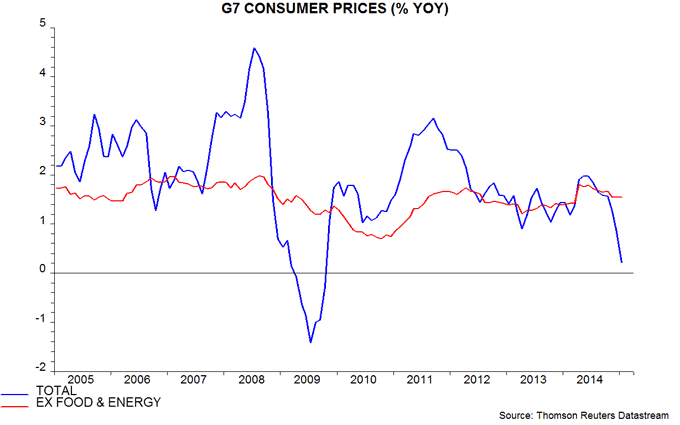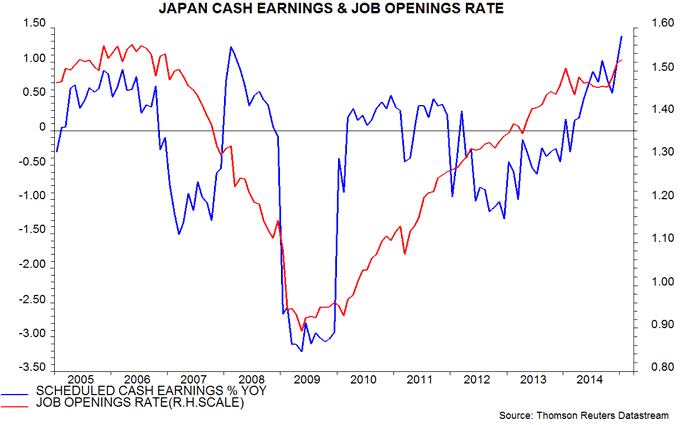G7 annual consumer price inflation fell to 0.2% in January, the lowest since October 2009, but the “core” rate excluding food and energy was unchanged at 1.6% – see first chart. Stable core inflation suggests that deflation worries are overblown.
The G7 headline and core rates are currently subject to a small upward distortion from last April's Japanese sales tax hike. Without this, core inflation would be 1.4% – close to its average of 1.5% since 2005.
The second chart shows the headline / core inflation gap and the annual rate of change of commodity prices, as measured by the IMF’s all-items index. The headline / core gap is probably at or close to a bottom, assuming no further fall in commodity prices.
Core inflation is likely to be supported by increasingly tight labour markets and associated upward pressure on wages and unit labour costs. As previously discussed, job openings rates (i.e. vacancies expressed as a percentage of filled and unfilled jobs) are at or above their 2000s cyclical highs in the US, Japan, Germany and the UK. Wage growth is firming in all four economies, while productivity trends remain weak.
In Japan, annual growth in scheduled earnings (i.e. excluding overtime and bonuses) at firms with 30 or more employees rose to 1.3% in January, a 15-year high – third chart. With the job openings rate up again, and profits buoyant, workers are in a strong position to push for further wage gains in the spring “shunto”.


